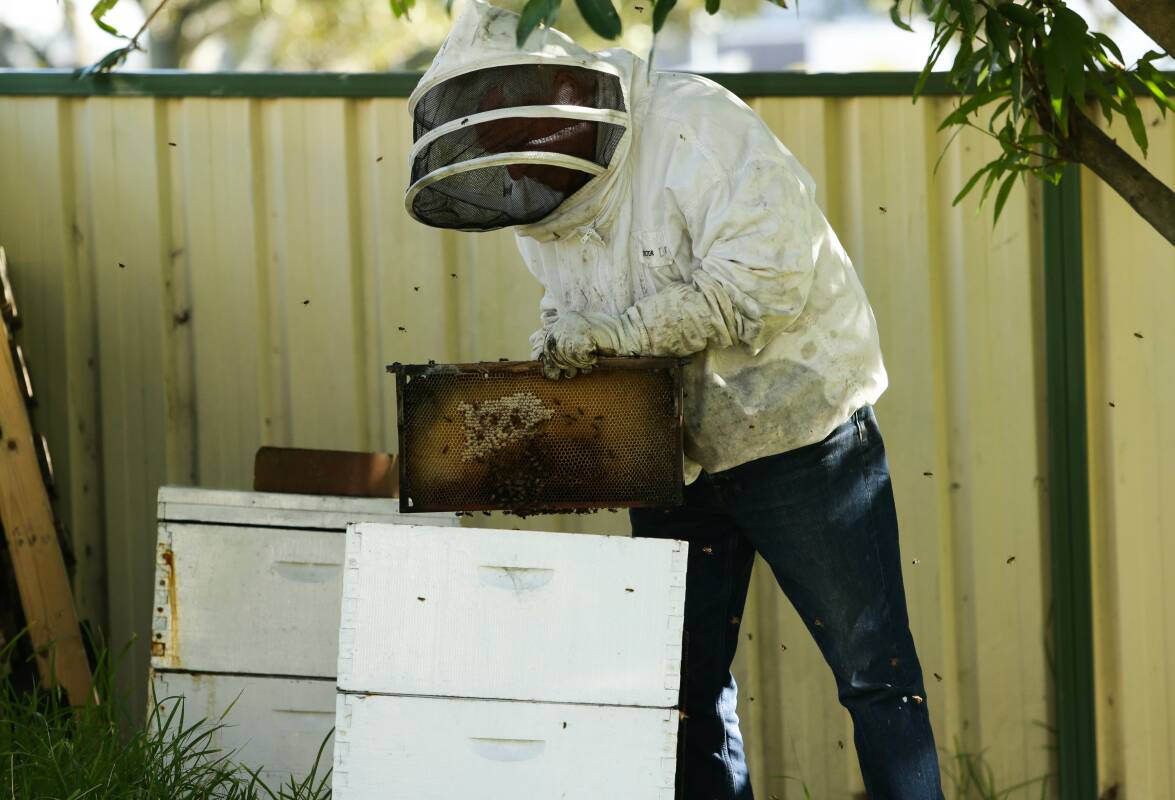
Newcastle beekeeper Neil Livingstone says it's time for the NSW government to lift all biosecurity zones put in place to deal with the varroa mite.
NSW Agriculture Minister Dugald Saunders said the government had lifted the 50km yellow "notification zone", allowing beekeepers in those areas to move their honeybees and hives.
But the government is keeping the 10km eradication and 25km surveillance zones - also known as the red and purple zones.
The red zone contained areas where honeybee hives were to be euthanised and the purple zone was where officials were monitoring and inspecting honeybees.
Mr Livingstone said the government was wasting taxpayers' money by destroying hives and bees.
"Stop it. The mite is too widespread."
He said the mite cannot be eradicated.
"It's not as though the bees have a sickness or a virus. It's a mite. We can live with the mite, as almost every other country has to do."
He said beekeepers can learn to test for the mites and kill them only when needed.
A NSW Department of Primary Industries official recently told one beekeeper that it was no longer eradicating all hives in the red zone, only those where varroa was detected and hives near such detections.
Mr Livingstone said he was "dead against the mass slaughter of the bees, even in the red zones".
"We need the bees for pollination. We're only two weeks off cucumbers needing to be pollinated."
Spring is only two weeks away, a time when bees move around much more frequently.
"They're going to have to lift all the zones. The mite has been found too far and wide," Mr Livingstone said.
Newcastle is the epicentre of the outbreak, which experts believe began in the summer. The first detections of mites occurred at two sentinel hives in Mayfield last month.
Mr Saunders said about 2400 beehives across 466 premises had been tested for the mite in the yellow zones and returned negative results. As such, the government believed the yellow zones were no longer needed. They will now become part of the so-called "blue general emergency zone".
Beekeepers in the blue zones can "work their hives" and move them if they have completed the Tocal College varroa mite online training. They must provide details of the proposed movement of hives to NSW DPI.
Mr Saunders said the change meant 3500 recreational beekeepers and almost 300 commercial beekeepers can now move hives.
As for the current situation, NSW DPI said the number of infected premises was 97.
"Work continues on eradication of infected premises in the Hunter area, and varroa mite surveillance in the Narrabri and Nana Glen areas," a DPI statement said.
Mr Saunders told AAP that the "next step would be to work towards eliminating the 25km surveillance zone".
"Being at that stage where we've dropped a zone shows what we're doing is actually working."
WHAT DO YOU THINK? We've made it a whole lot easier for you to have your say. Our new comment platform requires only one log-in to access articles and to join the discussion on the Newcastle Herald website. Find out how to register so you can enjoy civil, friendly and engaging discussions. Sign up for a subscription here.







